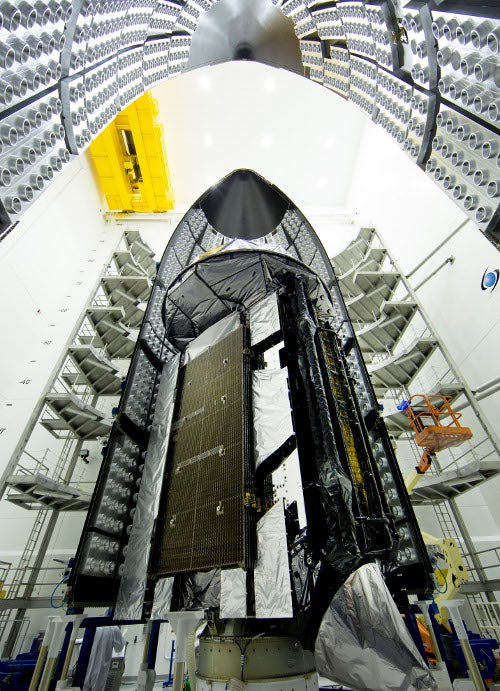
The US Navy’s Lockheed Martin-built second mobile user objective system (MUOS) satellite has successfully completed payload fairing encapsulation, as part of its preparation for launch aboard the United Launch Alliance Atlas V launch vehicle, scheduled on 19 July 2013.
Designed to enhance current secure mobile satellite communications, the MUOS features modern mobile-based facilities capable of providing voice, video and data simultaneously, while replacing the existing ultra high-frequency follow-on (UFO) system, which is nearing its expiry date.
The next-generation narrowband tactical satellite communications system will provide enhanced communications for troops on the move.
Compatible with the current UHF follow-on system and legacy terminals, a single MUOS will provide four times the capability that is being provided by the entire UFO constellation of eight satellites for the US Navy.
The MUOS narrowband satellite communication system constellation comprises four satellites and an on-orbit spare, in addition to four ground stations, to provide users with worldwide coverage and the ability to connect anywhere worldwide.
The full operational capability of the MUOS constellation is scheduled to be achieved in 2015 and will extend narrowband availability beyond 2025.
Since its launch in 2012, the navy’s first MUOS satellite has offered voice communications for users, and terminals, which are already testing using the advanced payload that enables data exchanges.
Lockheed is the prime contractor and system integrator, while the US Navy’s Program Executive Office for Space Systems and its Communications Satellite Program Office is responsible for the MUOS programme.
Image: The US Navy’s second MUOS satellite encapsulated in launch vehicle payload fairing. Photo: courtesy of Lockheed Martin.





